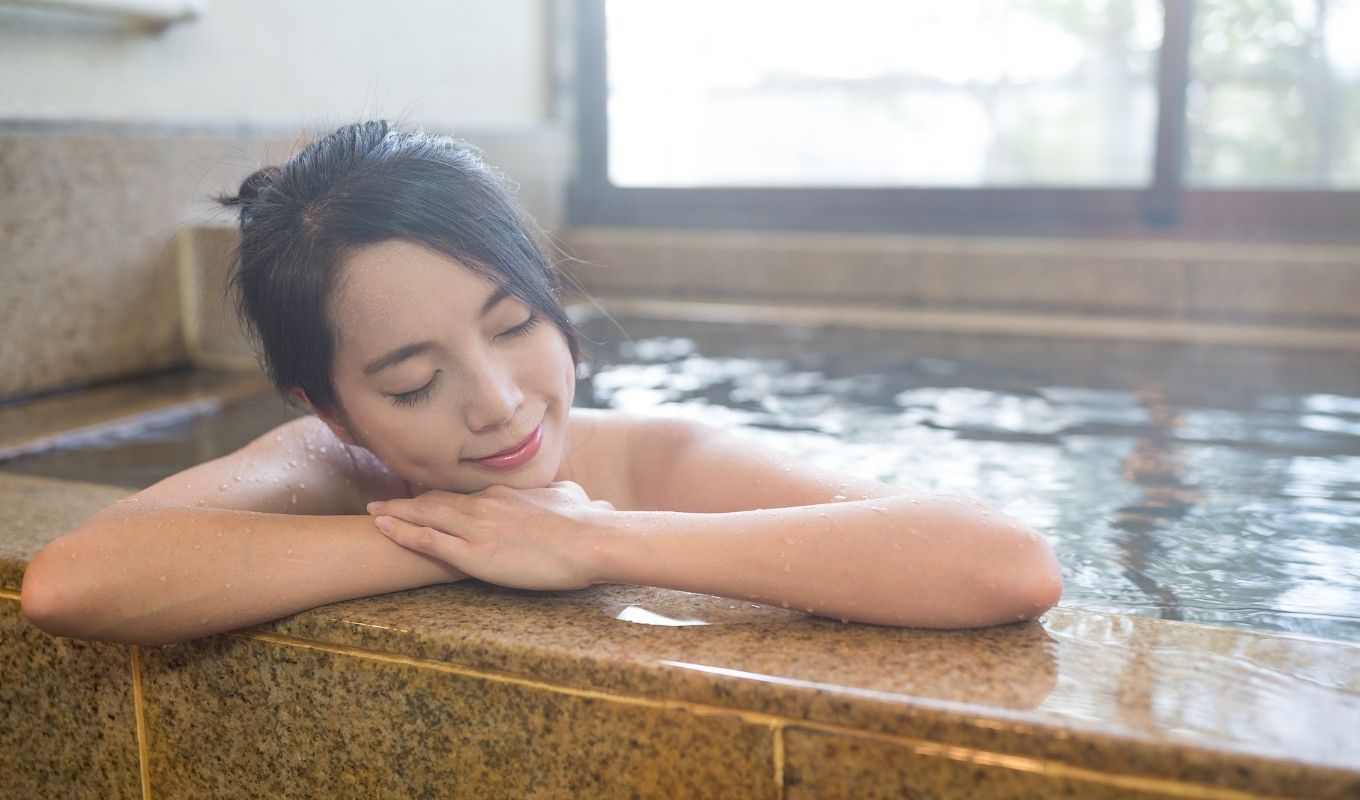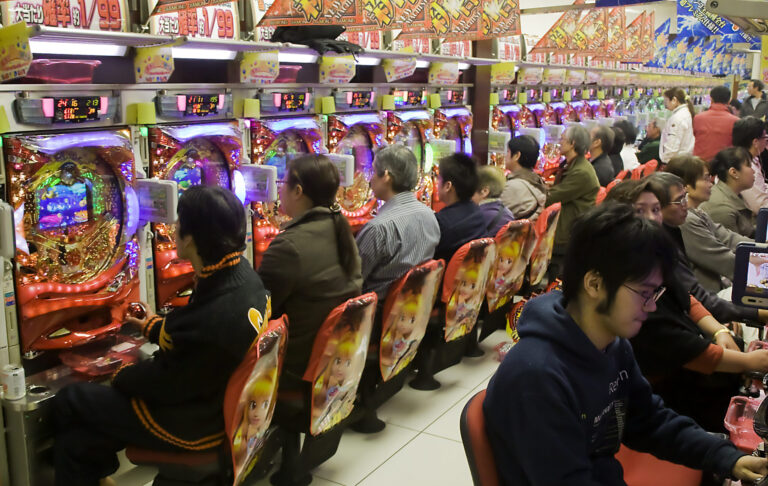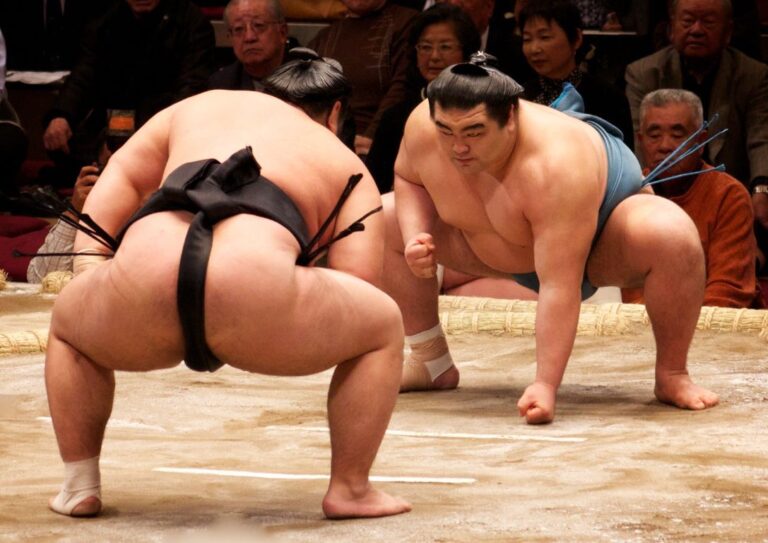Onsen, both indoors and out, are traditionally furnished with natural hot springs water. Japan is a nation with a lot of earthquakes and a fair amount of volcanoes; the geological phenomena that cause these also cause thousands of hot springs to form around the country. Onsen resorts have sprung around these hot springs, usually without compromising the serenity of the natural atmosphere.
The Baths
Hot springs contain natural minerals, such as sulfur, sodium chloride, hydrogen carbonate, and iron, which are believed to be beneficial for one’s health, particularly for skin conditions. The warm water eases muscle pains and fatigue and has been thought to help manage pain and discomfort associated with conditions such as diabetes and chronic constipation.
Guests with open and infectious sores or diseases are of course asked not to bathe in the communal baths, but in relatively rare cases, some mostly minor infectious conditions may have been spread through onsen. The warm temperatures and the pre-bath cleaning routines also help keep commutable conditions to a minimum. Natural onsen typically range from around 75 to 204 degrees Fahrenheit—and obviously, you spend less time in the hotter baths.
Baths that get too hot for bathing can’t simply have cold water mixed in with it, as that would dilute the mineral content. If the water streams down a hill like a waterfall, a series of buckets is put up so that the water collects in one bucket after another until it is deposited in the bath, losing some of its hot temperature on the way down. The water may also be cooled by a team of onsen attendants who use long wooden boards to stir the water in an area before the water is deposited into the bath. This process is called yomomi. The attendants often sing and dance as they stir and are a tourist attraction in their own right!
The Bathing Experience
In the most traditional of onsen, there is probably a connecting ryoukan (inn). Guests spend a night at the onsen in airy borrowed kimono with the onsen’s logo on it, taking time to play games like ping-pong, drink milk or sake, eat gourmet full-course meals served by the staff, and sleep in a traditional Japanese room in between a few sessions of bathing.
Today, most baths have separate sections for men and women (a single outdoor onsen might be separated by a wooden fence), but there are still a few “mixed baths” in which men and women bathe together, which was a common practice before the late 19th century. This wouldn’t be too shocking to the Westerner accustomed to public pools and hot tubs, but at the onsen, it is practically a rule that you must bathe completely naked!
Before patrons reach the onsen, they will walk through a changing room divided by gender. There, the guests will leave their clothes (usually a kimono if the onsen is at an inn) in a basket and proceed to a washing area, where they are required to sit on a stool in an exposed cubicle in order to thoroughly wash their hair and bodies with soap and rinse with a faucet or shower head. The Japanese are keen on cleanliness and view bathing as a relaxing experience, not one with which to clean yourself. (Think about it—if you don’t wash yourself before you bathe, you’re actually letting off all of the dirt, dead skin, and oil into the bath!)
Once they are clean, the guests can proceed to soak in the onsen. If they are concerned about modesty—which most Japanese do not worry about in a bathing setting—they may cover themselves with towels before and after they enter the onsen, but it is frowned upon to bring the towels into the water with them. Some onsen, particularly those with a lot of Western guests, may allow bathing suits, but this is very rare.
Some Surprising Onsen Facts
- Bathing nude with strangers might be a surprise to a Westerner, but it’s not strange to the Japanese, particularly as most baths are separated by gender. (Small children may accompany a parent of the opposite gender, though.) While natural onsen in full-breathtaking surroundings are most common in rural areas, communal bathing is quite common in metropolises, too. This is because Japanese cities are so crowded, not all apartments have their own bathtubs or showers. Instead, neighborhood residents head down to a sento (communal bath house) to bathe with other area residents of their gender.
- In the rural onsen, you may find yourself bathing with a monkey! The Japanese Macaques (a.k.a. “snow monkeys”) are quite fond of hot springs, too, and are known to come down from the mountains and climb in alongside humans. In the Jikokudani Monkey Park in Nagano, the monkeys have their own hot springs!
- If you have large and noticeable tattoos, you may be prohibited from using an onsen, particularly a more rural and traditional one. This practice dates back a few decades to discourage yakuza (Japanese mafia), who are traditionally covered in large tattoos, from patronizing the establishments. Also, although attitudes are changing, tattoos tend to symbolize rebelliousness in Japan and older Japanese might worry about bathing with people whom they believe will cause a ruckus in a relaxing atmosphere. Westerners are more often forgiven for bathing with tattoos, but sometimes even Westerners are asked to cover their tattoos with gauze or refrain from entering!



